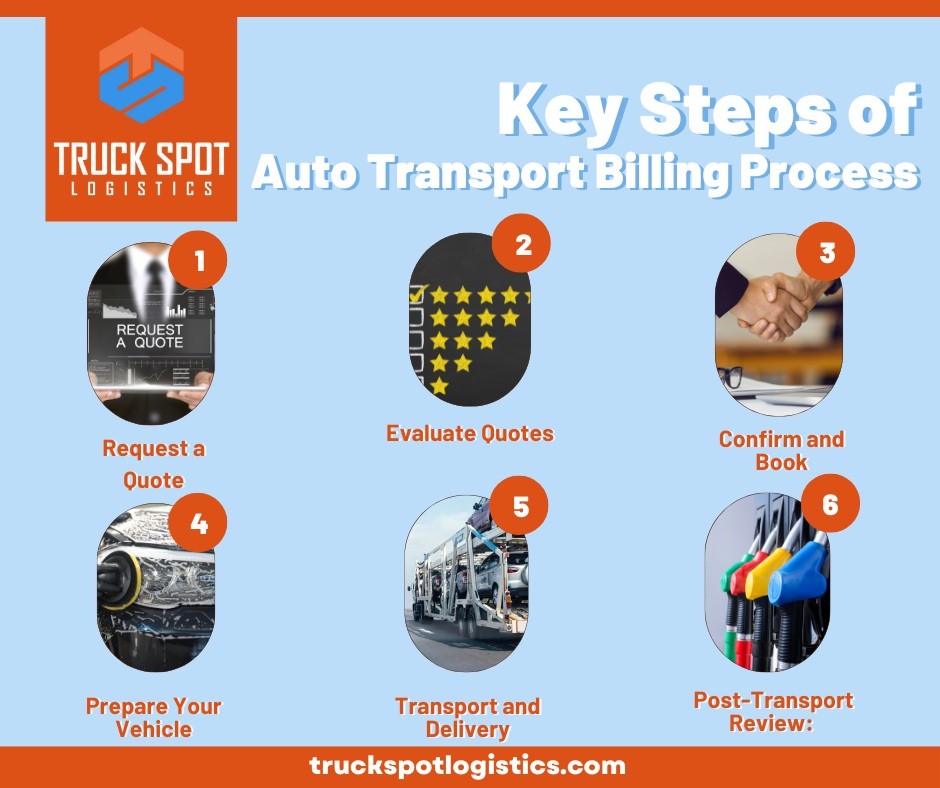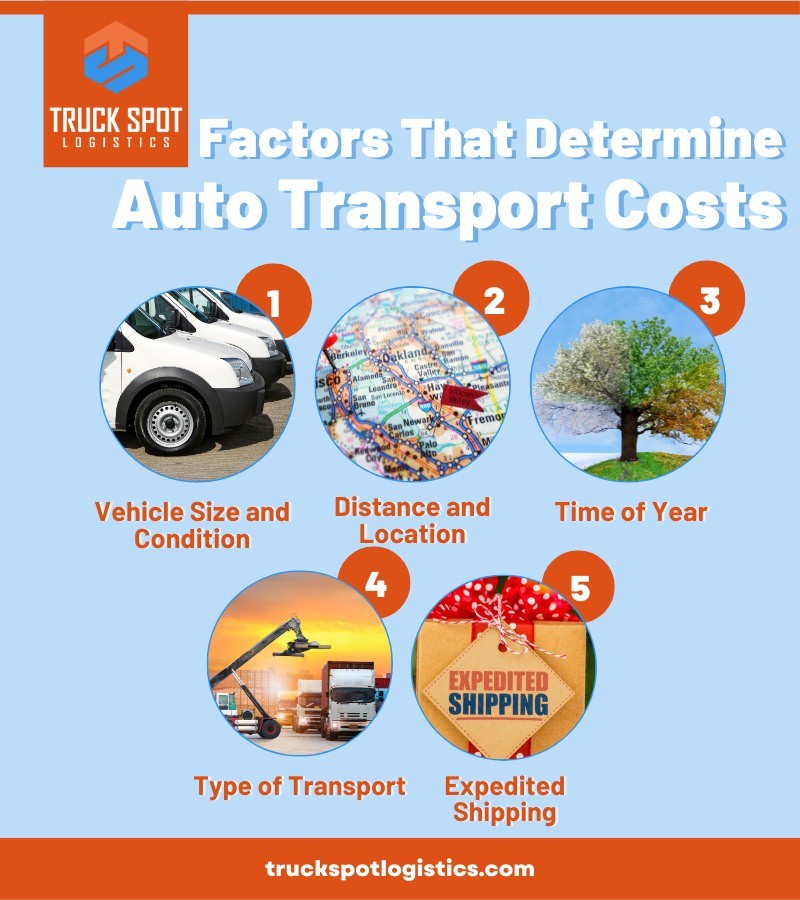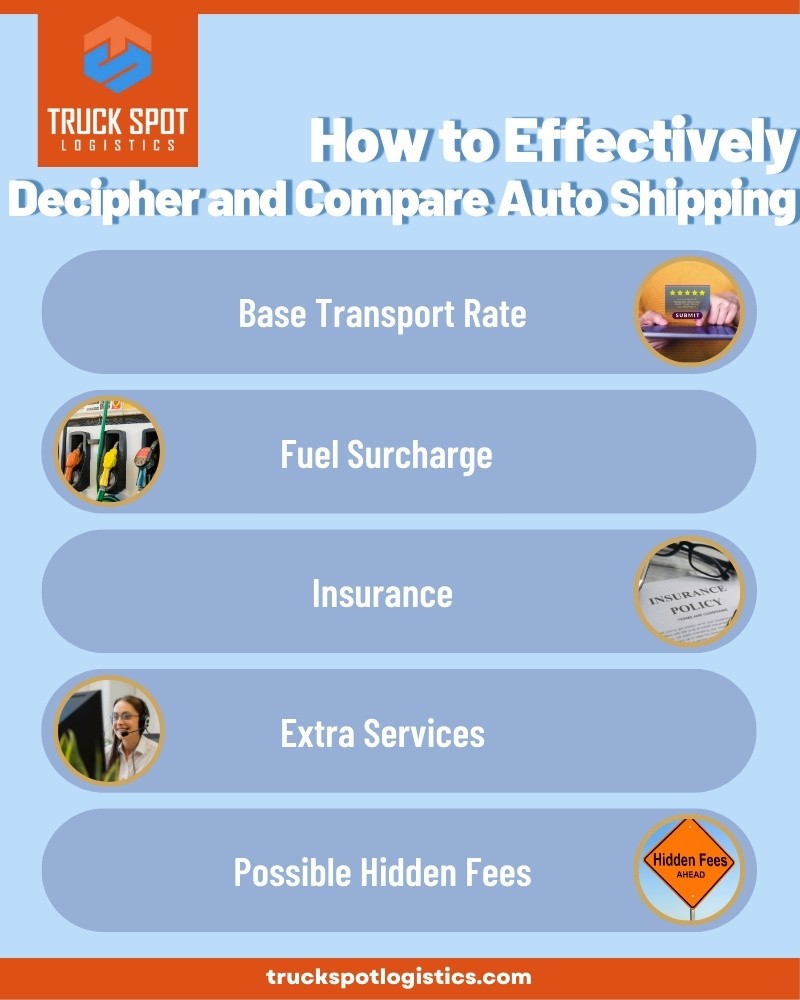Understanding and effectively navigating the auto transport billing process is critical for individuals and businesses seeking auto transport services. This article provides a comprehensive guide to the auto transport billing process, the complexities of auto transport costs, and how to decipher auto shipping quotes.
Understanding the Auto Transport Billing Process
Auto transport billing might seem overwhelming at first, but once you break it down, it’s not that daunting. In general, the process entails a few key steps:

Keep in mind that the exact process may vary depending on the company and the specific transport service you choose. Nonetheless, having a general understanding of what to expect will make the entire auto transport billing process less intimidating and more manageable. TruckSpot Logistics, with its comparative tool, provides a significant advantage by allowing you to survey multiple quotes at once, ensuring you receive the best service at a fair price.
Unraveling the Complexities of Auto Transport Costs
When it comes to auto transport costs, it’s fair to say there’s no one-size-fits-all price tag. The overall cost of shipping your vehicle will depend on a multitude of factors. Let’s break it down:

As you can see, there’s a lot to consider when it comes to auto transport costs. That’s why a service like TruckSpot Logistics is so valuable. It allows you to compare quotes from different companies, helping you understand and navigate these costs, ensuring you get the best deal possible.
Delving deeper into the specifics can often reveal opportunities for savings and efficiency that aren’t immediately obvious. To bring these opportunities into clear focus, we’ve created a resource that outlines the key steps in obtaining a precise quote.
By utilizing this resource, you’re equipped to make decisions that are not only cost-effective but also aligned with your transportation goals.
Deciphering Auto Shipping Quotes
Once you start soliciting auto shipping quotes, you’ll quickly realize there’s a lot more to it than just a single dollar figure. Here’s what you need to know to effectively decipher and compare these quotes:

Comparing auto shipping quotes can be a bit like comparing apples to oranges, with different companies offering different services and fee structures. But, understanding the components of a quote can help you make a well-informed decision.
Navigating the auto transport billing process may seem daunting initially, given the multitude of variables involved. But once you understand the process and the factors that contribute to auto transport costs, you can confidently navigate the terrain. The key to simplifying the process lies in understanding the auto shipping quotes, comparing them, and choosing the right fit based on your unique needs and budget.
That’s where TruckSpot Logistics plays a pivotal role. By offering a platform to compare auto shipping quotes from top-notch transport companies, it helps demystify the complexities and presents a clear, comprehensive picture. With TruckSpot Logistics, you’re not just saving time and money but also ensuring you receive a reliable, efficient, and cost-effective auto transport service. Remember, knowledge is power, and being informed is the first step towards a seamless auto transport experience.
FAQs
What should I do if there’s a discrepancy in the final bill compared to the original quote?
If there’s a discrepancy, contact the auto transport company immediately to clarify. Always refer to your original agreement or contract, which should specify what is included in the quoted price.
Can I pack personal items in my car during transport?
This depends on the company’s policy. Some may allow a limited amount of personal items, while others might strictly prohibit it due to insurance or weight constraints. Always ask before doing so.
Is it cheaper to transport my vehicle via a multi-car transport truck or a single-car carrier?
Typically, multi-car transport trucks are less expensive since the cost is spread across several vehicles. Single-car carriers can be pricier but may offer more flexible scheduling.
How can I ensure my vehicle will be safe during transport?
Check that the auto transport company is registered, insured, and has good reviews. Also, ensure your vehicle is adequately prepared for transport, following any guidelines provided by the company.
Why might my delivery date be delayed?
Various factors could cause delays, such as bad weather, traffic, mechanical issues, or delays with other vehicles on the same transport. Your transport company should keep you informed of any significant changes to your delivery timeline.
What is the FMCSA, and why does it matter?
The Federal Motor Carrier Safety Administration (FMCSA) regulates interstate auto transport companies to ensure safety and compliance. You can check a company’s FMCSA record to verify its legitimacy and safety record.













